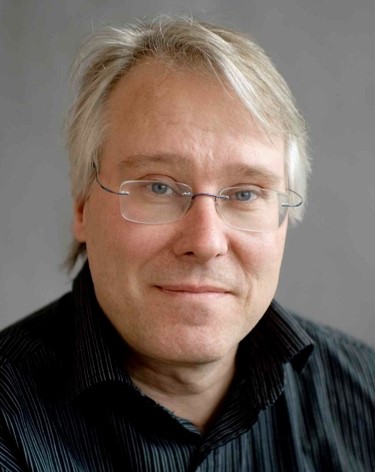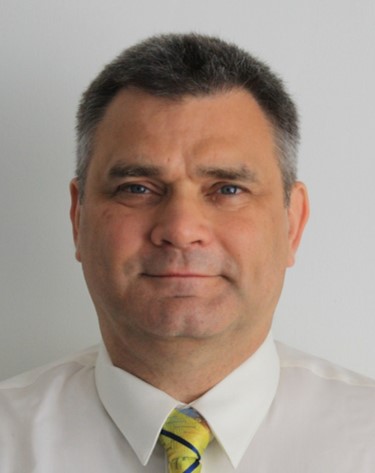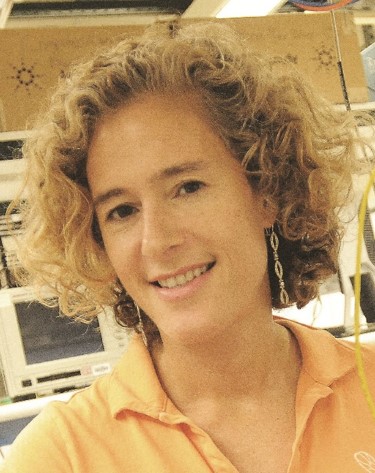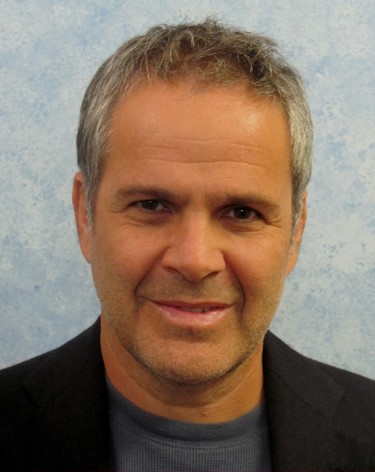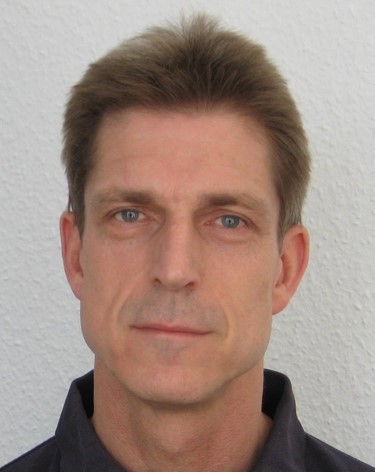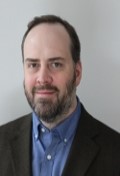




















|
|
TutorialsTUTORIAL SPEAKERS
Monday 28 September • 14:00 • Room Malvarrosa
Philip Russell Max Planck Institute for the Science of Light, Germany
Recent Scientific Applications of Photonic Crystal Fibres
Abstract: Since their appearance two decades ago, PCFs have triggered a range of unique advances in light-matter interactions, including ultrabroadband supercontinuum generation, enhanced optomechanical nonlinearities, OAM-preserving twisted PCFs and diffraction-free pulse compression and nonlinear frequency conversion in gases.
Biography:
Professor Philip Russell is a founding Director of the Max-Planck Institute for the Science of Light (MPL), a position he has held since January 2009. He is also Krupp Professor of experimental physics at the University of Erlangen-Nuremberg. He obtained his D.Phil. (1979) degree at the University of Oxford, spending three years as a Research Fellow at Oriel College. After several years in the USA, Germany and France, he joined the University of Southampton as a lecturer in 1986. From 1996 to 2005 he was a physics professor at the University of Bath, establishing the Centre for Photonics and Photonic Materials. His research interests focus on light-matter interactions in microstructured and photonic crystal fibres. He is a Fellow of the Royal Society and the Optical Society of America (OSA) and the recipient of several awards including the 2000 OSA Joseph Fraunhofer Award/Robert M. Burley Prize, the 2005 Thomas Young Prize of the IOP, the 2005 Körber Prize for European Science, the 2013 EPS Prize for Research into the Science of Light, the 2014 Berthold Leibinger Zukunftspreis and the 2015 IEEE Photonics Award. He is OSA's President in 2015, the International Year of Light.
Tuesday 29 September • 14:00 • Room Saler
Magnus Karlsson Chalmers University of Technology, Sweden
Transmission Systems With Low Noise Phase Sensitive Parametric Amplifiers
Abstract: We review and present the recent research on phase-sensitive amplifiers, and describe how they can be used in transmission systems.
Biography:
Magn He has authored or co-authored around 300 scientific journal and conference contributions, in the area of photonics and fibre optics. He is associate editor of Optics Express since 2010, has served in the technical program committees for OFC and ECOC, and is currently active in the TPCs for the Asia Communications and Photonics Conference (ACP), ICC and Globecom. He is a Fellow of the Optical Society of America. His current research is focused around linear and nonlinear fibre transmission effects, as well as multidimensional modulation and detection in optical communication systems.
Tuesday 29 September • 14:00 • Room Malvarrosa
Denis Khotimsky
NG-PON2 Transmission Convergence Layer: A Tutorial
Abstract: The first multi wavelength PON system, NG-PON2, has been specified by ITU-T (Q2/15). The tutorial presents a comprehensive review of the NG-PON2 transmission convergence layer specification and is targeted at development and verification engineers, system engineers, as well as product line management experts. The paper addresses selected key aspect within the tutorial scope.
Biography:
Denis A. Khotimsky received the Dipl. Eng degree from Moscow Aviation institute in 1987 (Electronic Engineering) and the Ph.D. from University of California in Santa Barbara in 1996 (Computer Science). He is currently a Distinguished Member of Technical Staff at Verizon Corporate Technologies in Waltham. Massachusetts, where he is focusing on PON-based access network planning. His prior affiliations include Lucent Bell Labs, Invento Networks (a startup he co-founded), Motorola, and ZTE. For the nine recent years, Dr. Khotimsky has been involved in standardization of passive optical network systems working with FSAN, ITU-T SG15, and Broadband Forum. He served as a TC layer specification editor for three generations of the PON systems.
Monday 28 September • 14:45 • Room Saler
Keren Bergman Columbia University, US
Toward Transparent Optical Networking in Exascale Computers
Abstract: We review the requirements and expectations of future Supercomputer architectures, analyse how transparent optical networking might contribute to these future systems scalable performance, and develop the most immediate challenges for optical system developers in this context.
Biography:
Keren Bergman is the Charles Batchelor Professor and Chair of Electrical Engineering at Columbia University where she also directs the Lightwave Research Laboratory (http://lightwave.ee.columbia.edu/). She leads multiple research programs on optical interconnection networks for advanced computing systems, data centres, high-performance embedded computing, and nanophotonic networks-on-chip. Dr. Bergman holds a Ph.D. from M.I.T. and is a Fellow of the IEEE and of the OSA.
Thursday 1 October • 08:45 • Room Malvarrosa
Ori Gerstel Sedona Systems, Israel
The Need for SDN in Orchestration of IP over Optical Multi-Vendor Networks
Abstract: We explain why distributed control lacks the ability to optimally control networks with multiple transport domains or both IP and optical layers. We then propose a practical architecture to fix these issues and experimentally demonstrate it over commercial IP/transport gear.
Biography:
Ori Gerstel is the founder and CTO of Sedona Systems – a startup specializing in Multi-layer SDN control for SP networks. Until the end of 2013, Ori was a Principal Engineer at Cisco, where he was responsible for driving the architecture of router-transport integration. Before joining Cisco in 2002, Ori held senior architecture positions at Tellabs and Nortel, where he architected the first mesh optical network and the first fully switched optical network respectively. He started his work in optical networking at IBM, where the first commercial DWDM system was developed. For these contributions, he was awarded the grade of IEEE Fellow (2008) and OSA Fellow (2014). Ori published ~100 papers in the main international conferences and journals in the field, as well as several book chapters. He holds over 35 granted patents on optical networks, and a similar number of pending patents. He served as conference committee member and co-chair of several communication conferences and has been regularly invited to teach short courses and attend panels. He also serves as editor-in-chief for the primary journal for optical networking (JOCN) and as a steering committee member for the OFC conference. Ori holds a Ph.D. degree from the Technion.
Tuesday 29 September • 08:45 • Room Malvarrosa
Henning Bülow Alcatel-Lucent, Bell Labs (Germany)
Practical implementation of Nonlinear Fourier Transform Based Optical Nonlinearity Mitigation
Abstract: This tutorial provides an introduction into the application of NFT in coherent transmission systems. It summarizes concepts for modulation, transmission, and detection of signal's nonlinear spectrum with an emphasis on experimental realization.
Biography:
Henning Bülow is a distinguished member of technical staff (DMTS) at Bell Labs, Alcatel-Lucent, in Stuttgart, Germany. He received his Dipl.-Ing. Degree in electrical engineering from the University of Dortmund, Germany, and a Ph.D. in electrical engineering from the University of Berlin for work on integrated optical switching matrices. During his more than two decades tenure with Alcatel-Lucent Bell Labs and formerly with its Research and Innovation Division, he has worked on erbium-doped fiber amplifiers, on the assessment transmission in the presence of polarization mode dispersion, on dynamic mitigation of transmission impairments by analog electronic, digital, or optical signal processing means, on 4D optimized coded modulation, and on spatial mode multiplexing. Recently he focused his research on the investigation of nonlinear Fourier transformation based signal processing in coherent transmission. He has authored or co-authored more than 150 conference and journal contributions, written three book chapters, and was member of technical program committee of the OFC conference. From 2008 to 2011 he served as Guest Professor with the University of Erlangen-Nuremberg.
Tuesday 29 September • 09:30 • Room Saler
Clint Schow University of California, Santa Barbara, US
Next Generation Data Centres: How Will Optics be Employed?
Abstract: Data centres are driving the development of next-generation optcs with higher performance at lower cost. Worldwide research encompasses multi and single-mode links, all-photonic switching and routing technologies, and hybrid networks combining electrical and optical switching.
Biography:
Clint L. Schow received B.S., M.S. and Ph.D. degrees in electrical engineering from the University of Texas at Austin. In 1999, Dr. Schow joined IBM in Rochester, MN, assuming responsibility for the receivers used in IBM’s optical transceiver business. From 2001 to 2004, he was with Agility Communications in Santa Barbara, CA, developing high-speed optoelectronic modulators and tunable laser sources. In 2004, Dr. Schow joined the IBM T.J. Watson Research Centre in Yorktown Heights, NY, and became manager of the Optical Link and System Design group in 2011. He has led numerous extensive international R&D projects and has directed DARPA-sponsored programs spanning chip-to-chip optical links, VCSEL and Si photonic transceivers, nanophotonic switches, and new system architectures enabled by high-bandwidth, low-latency photonic networks. In 2015, Dr. Schow joined the faculty of the University of California at Santa Barbara. Dr. Schow has been a long-time volunteer organizing the Optical Fiber Communications Conference (OFC), serving on the Steering Committee and as a General Chair for 2015. He is a Senior Member of the OSA and the IEEE, has published more than 150 journal and conference articles, and has more than twenty issued patents.
|

 Tweets por el @ECOC2015.
Tweets por el @ECOC2015.




